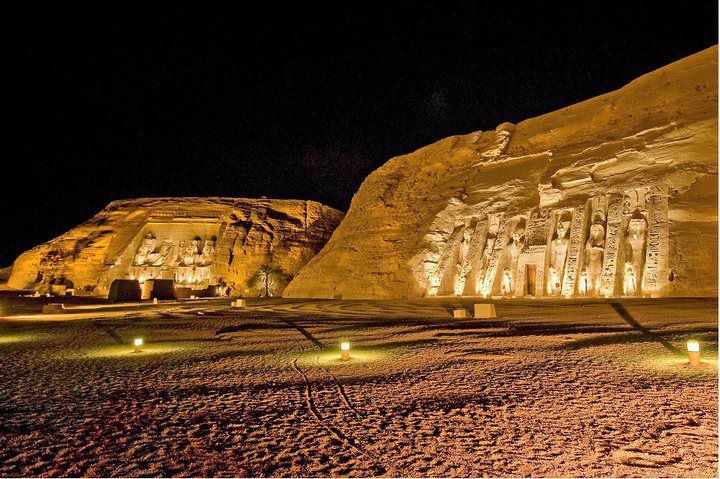Explore Abu Simbel: Ramses II Temples Plan & History
Embark on a journey to the heart of Nubia and marvel at the grandeur of the Abu Simbel Temples. These awe-inspiring structures, carved into the mountainside, stand as a testament to the power, wealth, and artistic brilliance of ancient Egypt. Join us as we explore the fascinating history, remarkable architecture, and enduring allure of the Abu Simbel Temples.
The Legends and History of Abu Simbel
The Abu Simbel Temples were built during the reign of Pharaoh Ramses II in the 13th century BCE. They were created to commemorate Ramses II's victory at the Battle of Kadesh and to honor the gods Amun-Ra, Ra-Horakhty, and Ptah. The temples also served as a demonstration of the pharaoh's divine right to rule and his dedication to the deities.
The Marvels of Abu Simbel's Architecture
1. The Great Temple: The Great Temple of Abu Simbel is the most renowned and iconic structure. It features four colossal statues of Ramses II, each standing at 20 meters tall, guarding the entrance. The interior boasts a series of halls and chambers adorned with intricate carvings and colorful reliefs depicting the pharaoh's military victories and religious rituals.
2. The Small Temple: Located adjacent to the Great Temple, the Small Temple is dedicated to Ramses II's beloved wife, Queen Nefertari, and the goddess Hathor. It showcases exquisite statues and reliefs that depict the royal couple in divine scenes, symbolizing their eternal union and devotion.
The Miracle of Relocation
In the 1960s, the construction of the Aswan High Dam threatened to submerge the Abu Simbel Temples under the rising waters of the Nile. In a remarkable international effort, the temples were painstakingly dismantled and relocated to a higher ground, preserving them for future generations. This extraordinary feat stands as a testament to human ingenuity and commitment to preserving cultural heritage.
The Solar Alignment Phenomenon
One of the most remarkable aspects of the Abu Simbel Temples is their solar alignment phenomenon. Twice a year, on February 22nd and October 22nd, sunlight penetrates the temple's inner sanctuary, illuminating the statues of the gods seated at the far end. This event symbolizes the birthday and coronation day of Ramses II and showcases the astronomical knowledge and precision of ancient Egyptian architects.
Visiting the Abu Simbel Temples
Reaching the Abu Simbel Temples is an adventure in itself. Located near the southern border of Egypt, they are approximately 280 kilometers southwest of Aswan. Visitors can reach them by plane, taking a short flight from Aswan or Cairo, or by joining a guided tour or a Nile cruise that includes a visit to Abu Simbel.
Experiencing the Timeless Beauty
A visit to the Abu Simbel Temples is an unforgettable experience, immersing you in the grandeur and mystique of ancient Egypt. As you explore the towering statues, intricate carvings, and sacred chambers, you can't help but be in awe of the architectural brilliance and artistic mastery on display.
Preservation and Conservation
To ensure the preservation of the Abu Simbel Temples, measures have been taken to protect them from erosion and environmental factors. Protective shelters and ongoing conservation efforts help maintain the integrity of these priceless treasures, allowing visitors from around the world to continue experiencing their magnificence.
Egypt Tours Including Abu Simbel Temple
| Tour | Itinerary | Price |
|---|---|---|
| Sonesta Amirat Dahabiya | 8 Days | Inquire |
| Sonesta St George | 4-5 Days | Inquire |
| Sonesta Moon Goddess | 4-5 Days | Inquire |
| Jaz Crown Jubilee | 4-5 Days | $ 627 |
| Iberotel Crown Empress | 4-5 Days | $ 649 |
| Ms Salacia Nile Cruise | 4-5 Days | $ 709 |
| Minerva Nile Cruise | 4-5 Days | $ 709 |
| Movenpick Royal Lotus | 4-5 Days | $ 815 |
| Ms Esplanade Nile Cruise | 4-5 Days | $ 825 |
| Ms Mayfair Nile Cruise | 4-5 Days | $ 850 |
| Nile Goddess | 4-5 Days | $ 935 |
| Ms Tosca Nile Cruise | 4-5 Days | $ 975 |
| Wheelchair Accessible Nile Cruise | 4-5 Days | $ 1145 |
| Steigenberger Omar El Khayam | 4 Days | $ 1220 |
| Prince Abbas Lake Nasser Cruise | 5 Days | $ 1220 |

